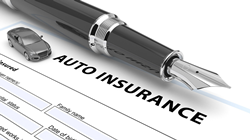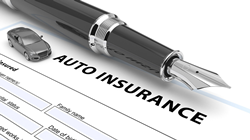
“Getting full coverage is definitely pricier than a minimum-only plan. But it is much more valuable and can help you avoid really unpleasant scenarios”, said Russell Rabichev, Marketing Director of Internet Marketing Company.
LOS ANGELES (PRWEB)
December 24, 2019
When it comes to car insurance, drivers have to choose between liability only or full coverage. In some cases, their decision does not depend solely on them. Full coverage is optional only if the policyholder owns the car. The holder of the car loan will require full coverage to the extent the policyholder owes on the car.
Liability provides coverage to other people for their injuries and property damaged sustained during an accident caused by the policyholder. Basically, it covers the victims of the policyholder’s wrongdoings. This policy is also referred to as “third-party coverage”. Without liability coverage, the policyholder will have to pay for everything from his own finances. Most insurance companies split liability coverage into two main components:
-
Bodily Injury. It includes medical bills, lost wages and other costs related to treating physical and psychological traumas. Bodily Injury is represented in contracts with 2 different numbers ($50.000/$100.000), which represent the maximum amount the insurer will pay out per person and the maximum amount paid for the entire accident. - Property damage. It includes the costs for repairing a car that has been damaged by the policyholder. It is usually the third number from the liability coverage limits (($50.000/$100.000/$50.000)
Generally, full coverage encompasses 3 policies: liability (more than the minimum required), comprehensive and collision coverage. Despite the name, full coverage does not cover everything. But it will give the policyholder more chances to be reimbursed, should anything happen to his car.
- Comprehensive coverage. It covers damage caused by other factors than a collision. If the car is damaged by extreme weather, objects or debris falling from the sky, animal attacks, riots, comprehensive will cover it. Furthermore, comprehensive car insurance also covers car theft.
- Collision coverage. If the car is damaged during a collision with another vehicle or structure, this portion of the auto insurance will reimburse the driver. It also covers cases when the owner flips over his car and damages it.
The bottom line is that liability coverage is designed to cover the policyholder when he or she causes an accident. The money will be paid to the victims, not to the policyholder. Without collision or comprehensive coverage, the policyholder will have to pay for repairs from his own budget. Full coverage also pays for totaled cars. It is important to know that companies use Actual Cash Value when negotiating claims.
Having full coverage is sometimes required in order to purchase other add-ons, like roadside assistance or new car replacement coverage.
Compare-autoinsurance.org is an online provider of life, home, health, and auto insurance quotes. This website is unique because it does not simply stick to one kind of insurance provider, but brings the clients the best deals from many different online insurance carriers. In this way, clients have access to offers from multiple carriers all in one place: this website. On this site, customers have access to quotes for insurance plans from various agencies, such as local or nationwide agencies, brand names insurance companies, etc.
For more information, please visit http://compare-autoinsurance.org/
Share article on social media or email:

